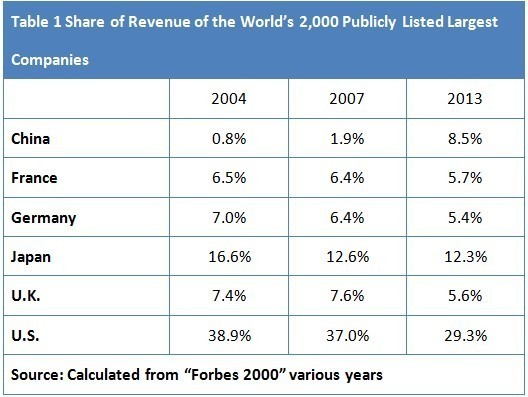The rise of China's global companies
- By John Ross
 0 Comment(s)
0 Comment(s) Print
Print E-mail China.org.cn, September 16, 2013
E-mail China.org.cn, September 16, 2013
The rise of individual Chinese companies to leadership positions in global competition is already well known. Lenovo is the world’s largest PC producer. Haier is the world’s largest household goods manufacturer. Huawei is the second largest producer of telecommunications equipment. Forbes magazine ranked ICBC as the world’s overall number one company in 2013 by combined revenue, assets, profits and market capitalization.

But it is crucial to measure the positions of China’s companies in global competition systematically. Overall China’s top 500 companies, with $8 trillion operating income, have approximately two thirds the revenue and assets of the top 500 U.S. companies. China’s companies are expanding significantly faster than their U.S. competitors – the latter have primarily strengthened their position in U.S. markets via cost cutting without significant growth. But despite very striking progress, China still has to catch up with the largest international competitors in a series of sectors.
Attempts to analyze the true comparative position of China’s companies in global competition are sometimes attempted via bilateral comparison of the top 500 companies in the U.S. and China. However, while bilateral comparisons are interesting they can also be misleading, as a significant decline of the global position of U.S. companies has taken place over the last decade – as may be seen in Table 1. Therefore bilateral comparisons to the U.S. do not establish the overall position of Chinese companies in global competition.






